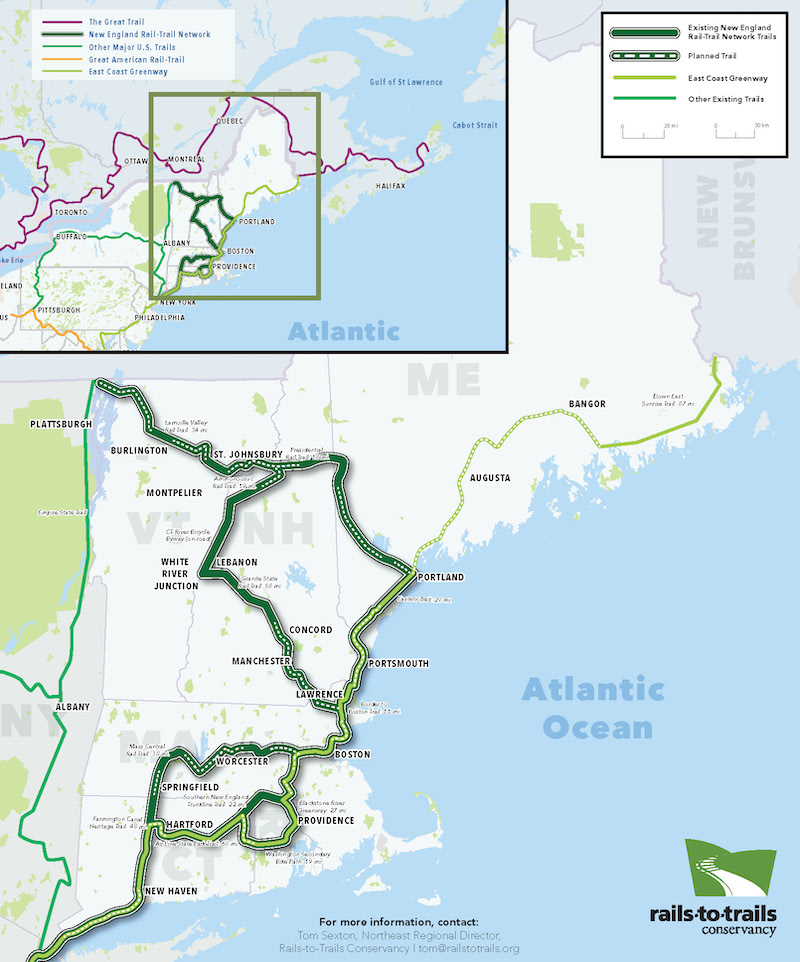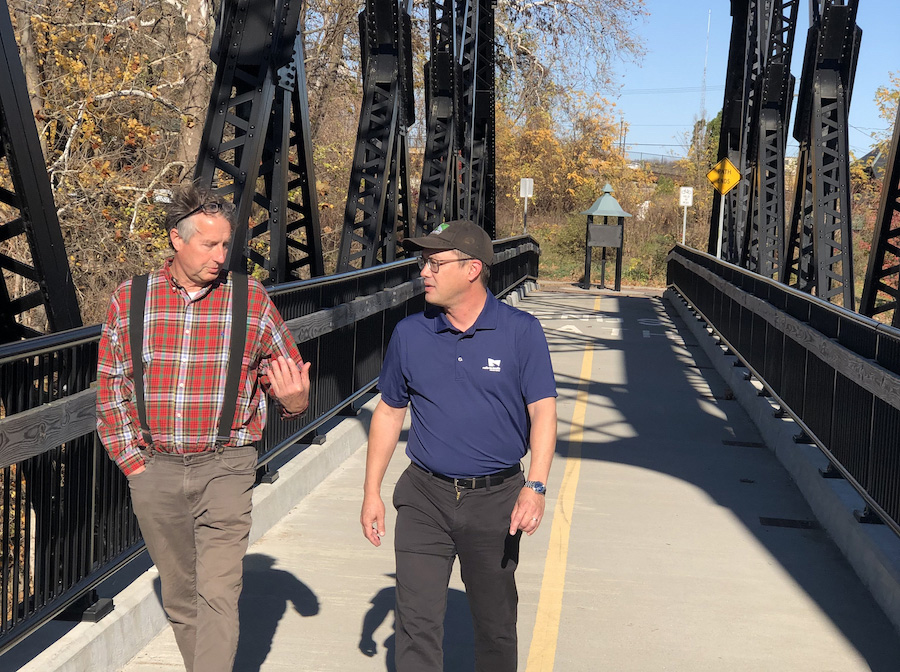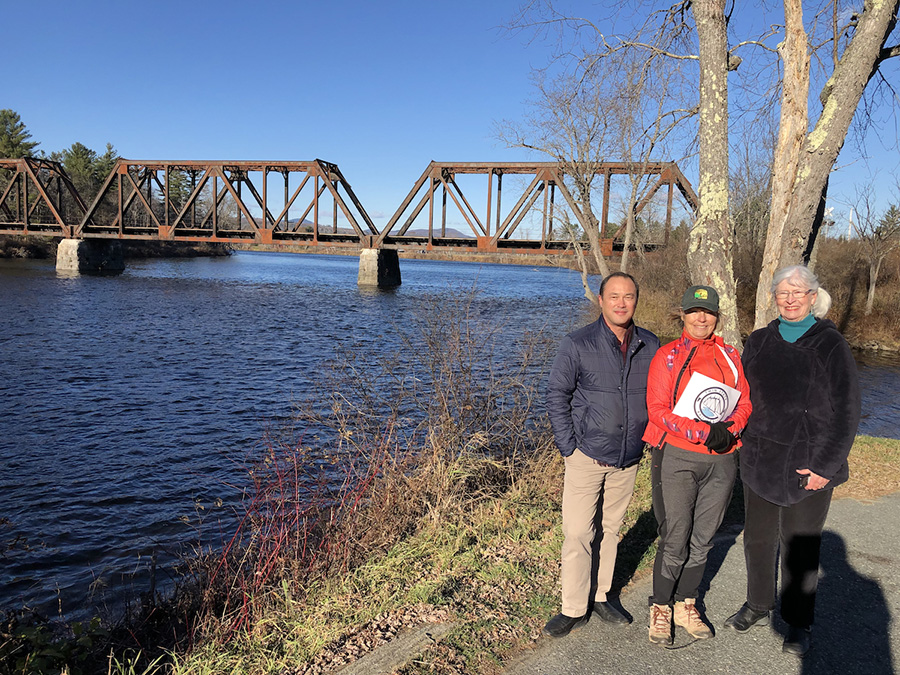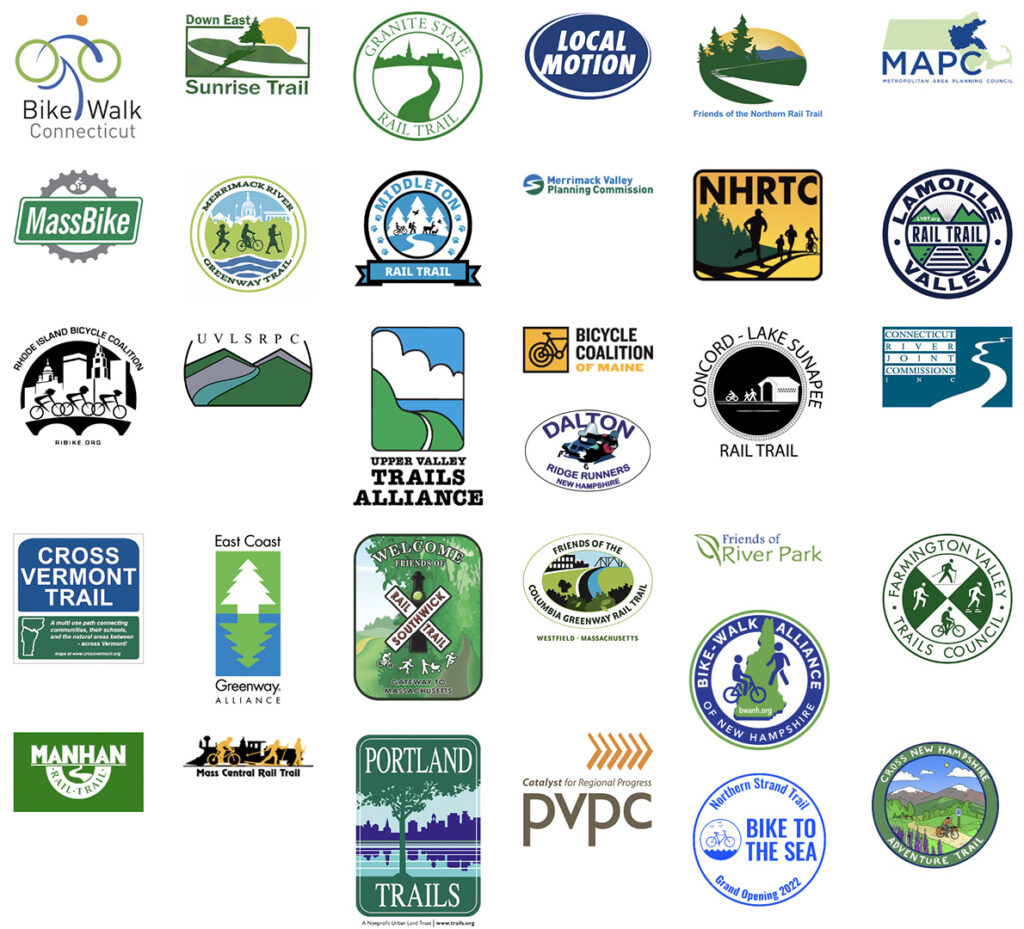New England Rail-Trail Network
Northern Rail Trail | Photo by TrailLink user jrakis
Imagine a sprawling, interconnected system of multiuse trails that could take you city to city, state to state—across an entire region of the country. That’s the vision behind an exciting new initiative that began in 2019 called the New England Rail-Trail Network. Rails-to-Trails Conservancy is working with trail advocates and transportation leaders from six states—Connecticut, Maine, Massachusetts, New Hampshire, Rhode Island and Vermont—to advance a plan for connecting the region’s 1,000 miles of open trail, and develop criteria for prioritizing future trail projects that can build momentum and mobilize support for the effort.
Vision

The goal of this spine network is to unite the New England region’s six states by multipurpose trail. Borne on a mega vision of creating a simple, bold, memorable network with a minimum on-road mileage of 10%, the purpose of the network vision is not to serve as a comprehensive list of all open trails or trail projects—but to include only the key corridors critical to uniting the six states together.
Only major “spine” trails have been included; however, other connectors can be added over time (and GIS sub layers will contain many other trails). These criteria will keep the focus squarely on completion of the priority corridors, with support being provided to adjoining systems and trails, since these corridors will be connecting to the larger interstate system. Over time, additional connecting trails will be strategically added to the project, with further work potentially including linkages to trail networks in New York and Canada.
Advancing the Network

Fortunately, counting on-road miles, over 50% of the network is already open. The completed trails within the system have made the case for even more investment in trails via the many benefits that have been generated in the region, including job creation, community development and alternative transportation, that has helped to decrease carbon emissions and address climate change.
The region has many positive attributes toward making this vision a reality, including: some 1,000 miles of open trails (and growing); a variety of relevant, planned trail projects; supportive and well-staffed regional planning agencies; and—as with most successful trails—dedicated and knowledgeable volunteers.
New England is described as the only multistate region with “clear, consistent boundaries,” and therefore, it makes sense that it should be the first distinct region in America to articulate a multipurpose trail vision.
Since the March 2019 launch meeting with 15 New England trail experts, RTC has convened several working groups to assess corridor potential and define the vision. Several trails have been earmarked as priorities in New Hampshire and Vermont; this includes the 30-mile conversion of the dormant Twin State Railroad and the Connecticut River Bicycle Byway (a vestige of an old federal highway program), which contains a 40-mile section that could connect trails in Hampshire and Vermont on both sides of the river.
Progress and Next Steps

In 2021, RTC and partners in New Hampshire and Vermont formed the Twin State Rail-Trail Coalition, which has identified several priority goals, including:
- Connecting the southeast end of Vermont’s 93-mile Lamoille Valley Rail-Trail, the longest complete rail-trail in New England, to Whitefield, New Hampshire, where it can further connect with the much-loved 18-mile Presidential Rail Trail and 19.2-mile Ammonoosuc Rail Trail.
- Securing funding that will support local and national efforts to guide implementation of the Twin State Rail-Trail.
- Supporting state and federal legislation for the redevelopment of the Connecticut River Bicycle Byway.
The next step to move the concept forward is securing funding for RTC to guide the implementation of the agreed upon workplan.
Partners

Resources
FOR MORE INFORMATION, CONTACT:
Tom Sexton, Rails-to-Trails Conservancy’s Northeast Regional Director